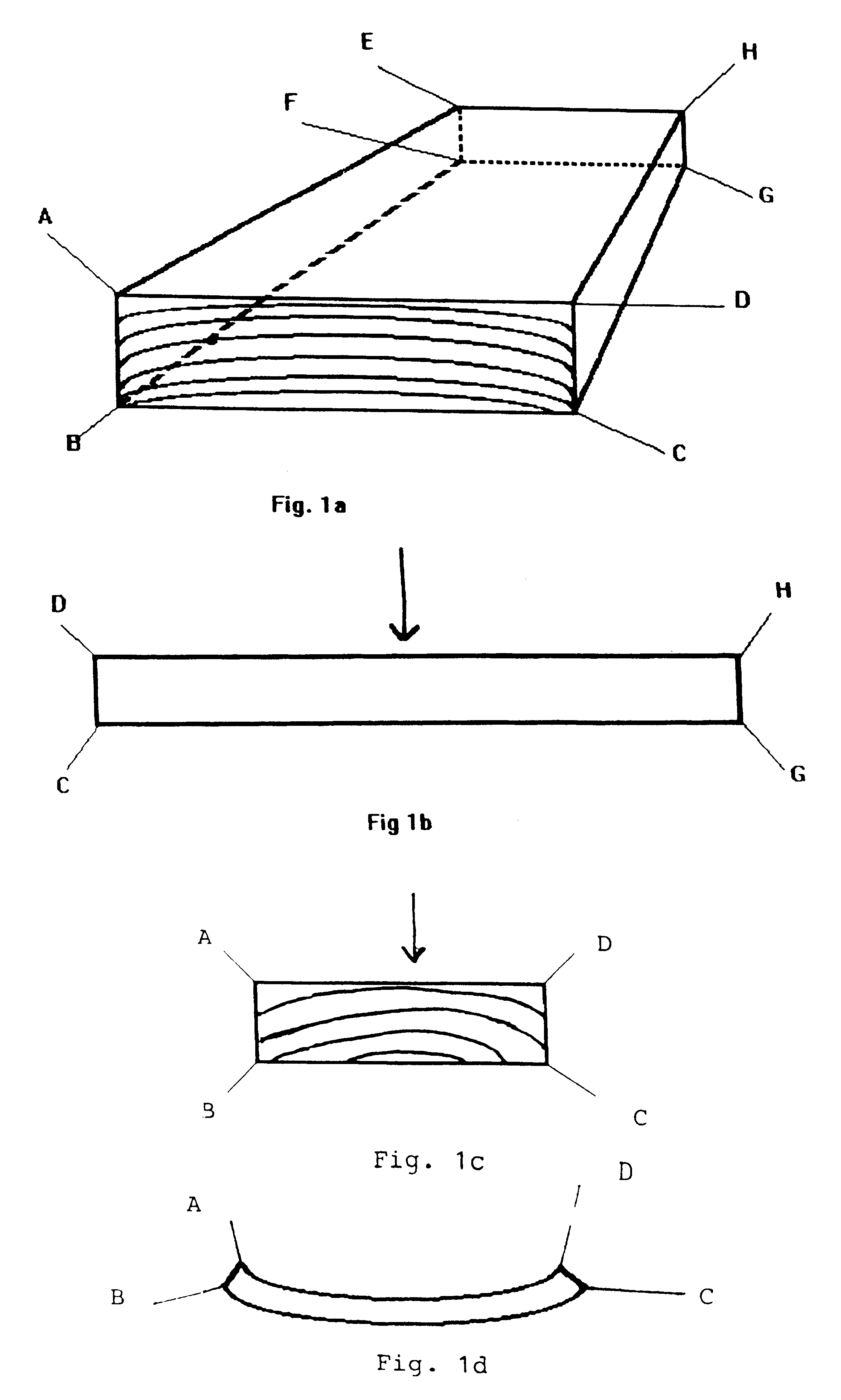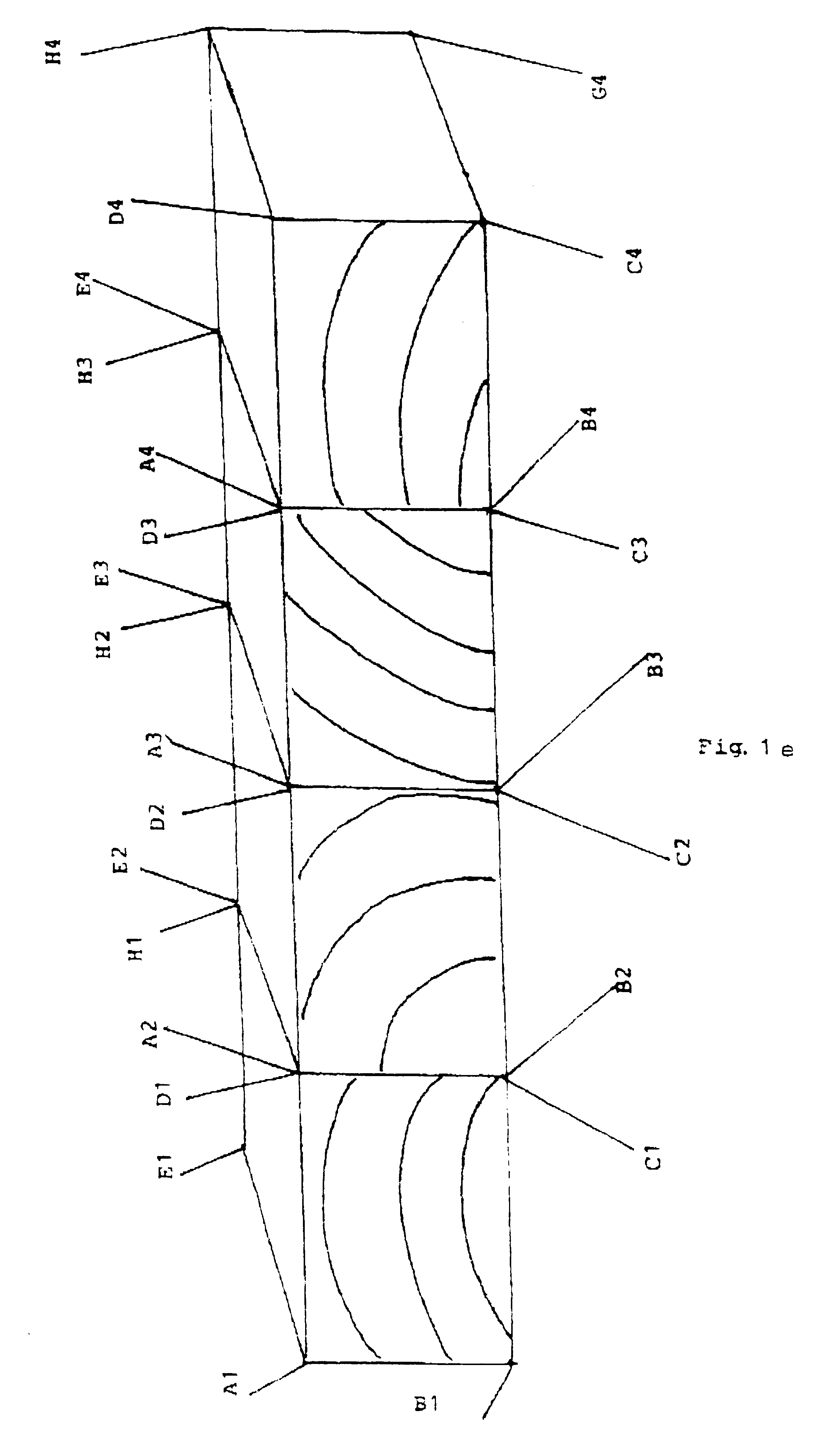Material and process for its production
a technology of material and process, applied in the direction of lamination, dead plant preservation, wood compression, etc., can solve the problems of difficult to obtain complex shapes, inability to recover normal rigidity of wood materials, and insatiable flexibility of material described in these documents
- Summary
- Abstract
- Description
- Claims
- Application Information
AI Technical Summary
Problems solved by technology
Method used
Image
Examples
example 2
A specimen of aspen having the dimensions 550.times.170.times.35 mm (FIG. 3A, the annual rings are indicated) and a moisture content which was 48% of that of the living tree was used as starting material. The specimen was pressed isostatically in the same manner as in Example 1. The maximum pressure was 1000 bar, the temperature 34.degree. C. and the pressing time 2 minutes. After pressing, the dimensions of the specimen were 438.times.136.times.22 mm. It was hand-planed all round to make it completely smooth. The specimen was then sawn through along its length to give three specimens having the dimensions 146.times.136.times.22 mm. These specimens were in turn sawn into lamellae of approximately 20 mm in width, and the surfaces were levelled by hand-planing, the lamellae were then placed up against each other such that they lay in the same way as before sawing (FIG. 3B), and furthermore such that the three original specimens lay up against each other. Accordingly, 21 lamellae lay u...
example 3
This example relates to determining elasticity modulus of the wooden material of the present invention. Aspen wood, which is diffuse porous, was compressed isostatically with a pressure of 1000 bar. Subsequently, the wood was sawed in pieces of 20.times.20.times.200 mm. The direction of the fibres of the pieces was perpendicular to the longitudinal direction of the piece.
A first group (A) of pieces of 20.times.20.times.200 mm was provided. The pieces of this group were sawed and glued in the same way as the pieces of group D, but the wood had not been compressed isostatically.
The pieces of the second group (B) were neither sawed nor glued together again.
The pieces of the third group (C) were sawed in 3 pieces of 20 mm.times.20 mm.times.60 mm, 20 mm.times.20 mm.times.80 mm, and 20 mm.times.20 mm 60 mm respectively. These pieces were then glued together again using the same glue as in example 2 in such a way that a new combined piece of 20 mm.times.20 mm.times.200 mm was obtained and ...
PUM
| Property | Measurement | Unit |
|---|---|---|
| pressure | aaaaa | aaaaa |
| temperature | aaaaa | aaaaa |
| isostatic pressure | aaaaa | aaaaa |
Abstract
Description
Claims
Application Information
 Login to View More
Login to View More - R&D
- Intellectual Property
- Life Sciences
- Materials
- Tech Scout
- Unparalleled Data Quality
- Higher Quality Content
- 60% Fewer Hallucinations
Browse by: Latest US Patents, China's latest patents, Technical Efficacy Thesaurus, Application Domain, Technology Topic, Popular Technical Reports.
© 2025 PatSnap. All rights reserved.Legal|Privacy policy|Modern Slavery Act Transparency Statement|Sitemap|About US| Contact US: help@patsnap.com



